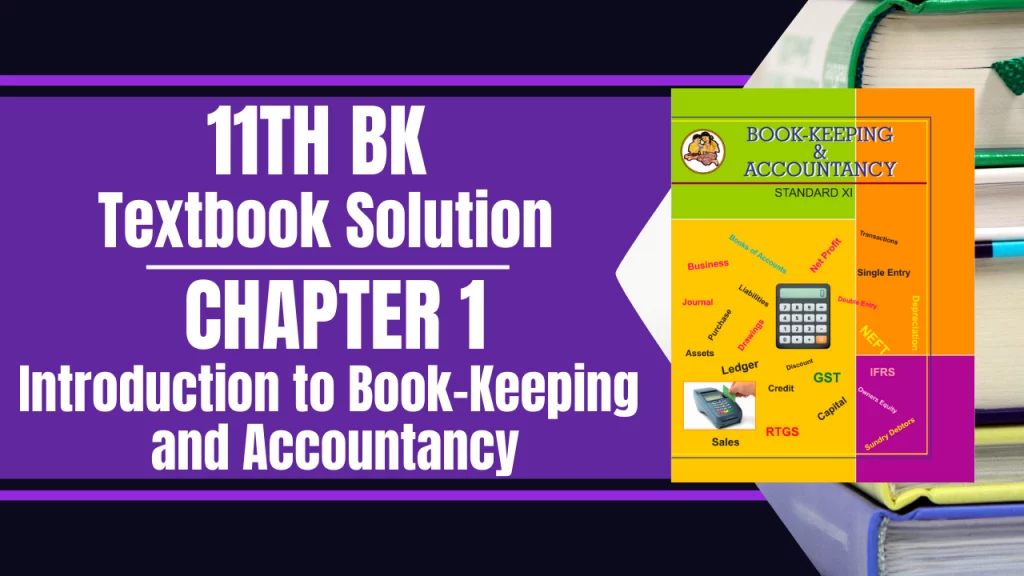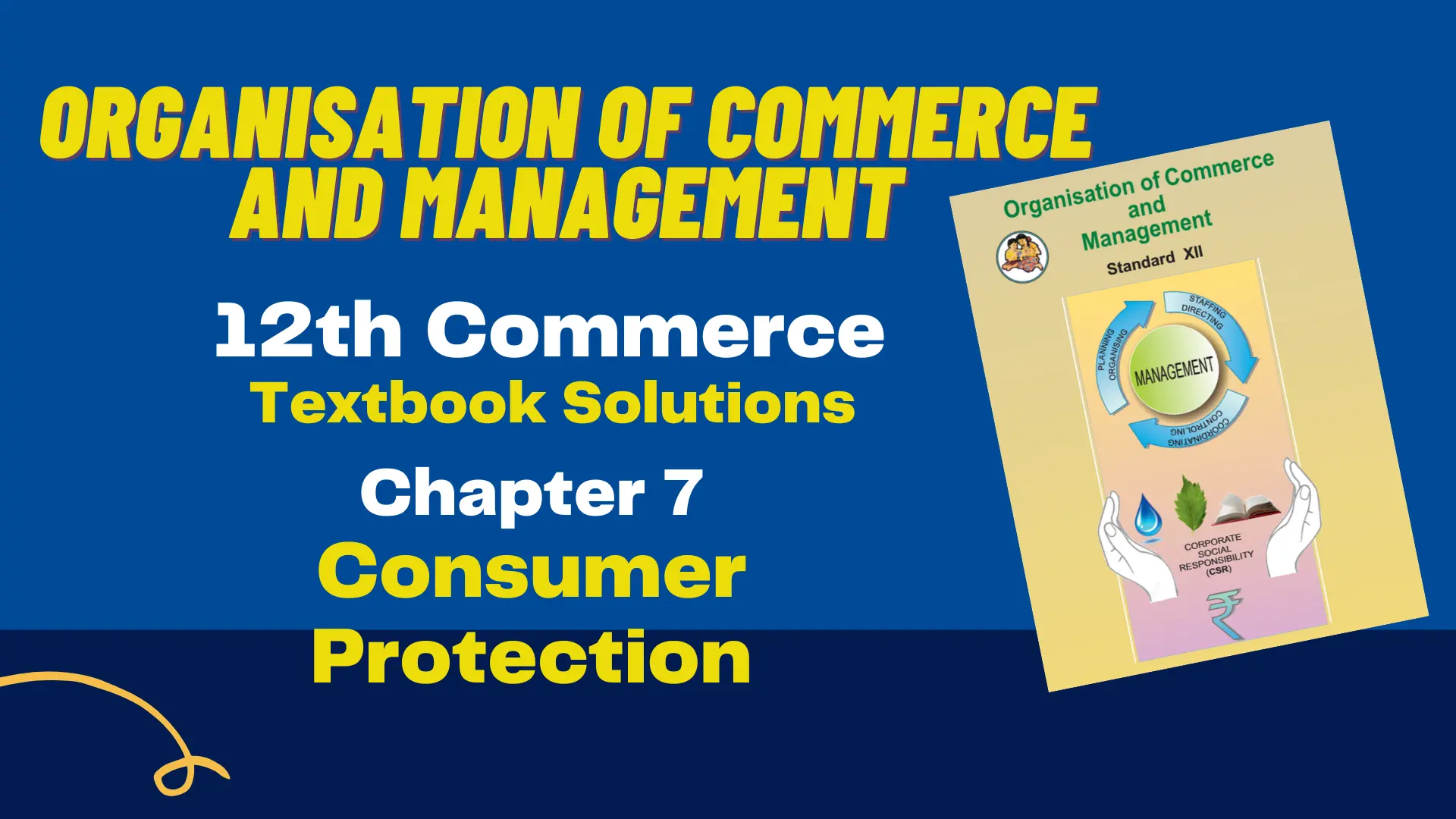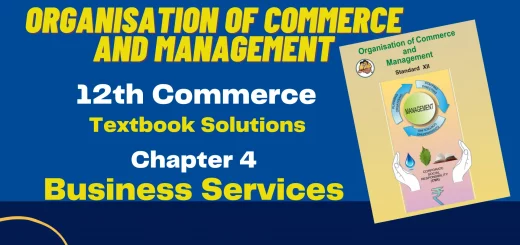11th BK 1st Chapter Exercise – Maharashtra Board (Introduction to Book-Keeping and Accountancy) – Free Resource
Table of Contents
11th BK 1st Chapter Exercise

Chapter 1 – Introduction to Book-Keeping and Accountancy
Q.1 Answer in One Sentence
1) What is Book-keeping?
Answer:
‘Book-keeping’ means recording of the business transactions in the books of accounts in a systematic way. All the monetary transactions are recorded datewise for accurate business results from such records at the end of the accounting year.
2) What is meant by Goods?
Answer:
The term ‘goods’ refers to merchandise, commodities, articles, or things in which a trader trades. These are purchased or manufactured for the purpose of sale and to earn profit.
3) What is Capital?
Answer:
The total amount invested into the business by the owner is called capital.
4) What are Drawings?
Answer:
The amount of cash or value of goods, assets, etc., withdrawn from the business by the owner for personal use called as drawings.
5) What is Goodwill?
Answer:
Goodwill is the reputation of business expressed in terms of money. Goodwill is an intangible asset.
Q.2 Give the word term or phrase which can substitute each of the following statements
1) Recording of business transactions.
Answer: Book-keeping
2) Amount invested in a business by the proprietor.
Answer: Capital
3) A person to whom an amount is payable.
Answer: Creditor
4) Exchange between two persons.
Answer: Transaction
5) Excess of expenses over income.
Answer: Loss
6) A person whose assets are sufficient enough to meet business obligations.
Answer: Solvent
7) Art and science of recording business transactions.
Answer: Book-keeping
8) Property of any description owned by Proprietor.
Answer: Assets
9) Assets that remain in the business for only for short time, and can be converted into cash very easily.
Answer: Current Assets
10) Allowance is given on catalogue price of goods.
Answer: Trade Discount
Q.3 Select the most appropriate alternatives from those given below and rewrite the statements.
1) Surplus of income over expenses is _____.
a) Profit
b) Deficit
c) Loss
d) Financial Statements
2) In _____ basis of accounting, actual cash receipts and actual cash payments are recorded.
a) Accrual
b) Hybrid
c) Cash
d) Mercantile
3) Amount which is not recoverable from the customer is known as _____.
a) Bad Debts
b) Debts
c) Debtors
d) Doubtful debts
4) Accounts must be honestly prepared and they must disclose all material information is known as _____.
a) Entity Concepts
b) Dual Aspect Concept
c) Disclosure Concept
d) Cost Concept
5) A commodity in which a trader deal is known as _____.
a) Goods
b) Income
c) Property
d) Expenditure
6) _____ means a reputation of a business valued in terms of money.
a) Trademark
b) Assets
c) Patents
d) Goodwill
7) According to _____ cash flow statement is prepared and presented for the period for which the profit and loss account is prepared.
a) AS-3
b) AS-10
c) AS-6
d) AS-2
8) The immediate recognition of loss is supported by the principle of _____.
a) Conservatism
b) Objective
c) Matching
d) Consistency
9) Brief explanation of an entry is called as _____.
a) Folio
b) Narration
c) Posting
d) Journalising
10) An act of exchange of things or services between the two parties is termed as_____.
a) Ledger
b) Transfer
c) Transaction
d) Business
11th BK 1st Chapter Exercise
Solution of other subjects
Solution of all Chapters of BK
1 – 2 – 3 – 4 – 5 – 6 – 7 – 8 – 9 – 10
Q.4 State whether the following statements are true or false with reasons
1) Book-keeping and accounting are one and the same thing.
Answer: False
Reason: Bookkeeping means recording business transactions in a separate set of books and accountancy is the process of summarising and analyzing business transactions which are recorded in the books of accounts, so bookkeeping and accounting are not one and the same.
2) Conservatism means to follow safe side.
Answer: True
Reason: While recording the business transactions we have to anticipate no profit but provide for all possible losses therefore we can say that Conservatism means to follow safe side.
3) The double entry system is based on “Dual Aspect” concept.
Answer: True
Reason: According to Dual Aspect concept, every transaction or event has two aspects, i.e., dual effect. This concept recognizes the fact that for every debit, there is a corresponding and equal credit effect.
4) Bank overdraft is an asset of the business.
Answer: False
Reason: Bank overdraft is a liability of a business. Businesses owe to the bank for the excess amount withdrawn from a bank account. It is a temporary loan from a bank.
5) Solvent person is a person whose assets are more than his liabilities.
Answer: True
Reason: If a person’s assets are more than his liabilities, or equal to his liabilities, he is called as a solvent person.
6) Cash discount does not appear in the books of accounts.
Answer: False
Reason: It is the amount deducted from the final amount due at the time of receipt. It is the concession given for encouraging prompt payment. A cash discount is calculated after deducting trade discount, since it is loss to the seller and gain to the buyer, cash discount appears in the books of accounts.
7) A transaction is concerned with money or money’s worth.
Answer: True
Reason: In a business, the transaction having monetary value should be recorded in the books of accounts, which means a transaction must be concerned with money or money’s worth.
8) Accounting is the language of business.
Answer: True
Reason: Accounting means how you record, classify or analyze the business transaction which suggests that accounting is the language of business.
9) In earlier times of civilization, accounting was done by owners.
Answer: False
Reason: In the earlier time of civilization, accounting was done by agents who managed the properties of wealthy people. They prepared accounts periodically for the owners of the property.
10) Book-keeping is useful to find out all tax liabilities.
Answer: True
Reason: All the business transactions are recorded in the books of accounts so there is no question of hiding any income and expenses, with the help of bookkeeping businessmen knows their liabilities towards the government for tax payments like GST, Income Tax etc.
Q.5 Do you agree or disagree with the following statements
1) Accounting is useful only to the owner. (Disagree)
2) Book-keeping is an art and science. (Agree)
3) Bills Payable is an asset of the business. (Disagree)
4) In Book-keeping and Accountancy only non-monetary transactions are recorded. (Disagree)
5) The Assets which give long-term benefits to the business are Fixed Assets. (Agree)
Q.6 Complete the following sentences
1) Revenue arising as a result of business transactions is known as Income.
2) Excess of gross profit over operating expenses is operating profit.
3) An expenditure which is basically revenue in nature but the benefit of which is not exhausted within one year is called as Deffered Revenue Expenditure.
4) The amount deducted by the seller from the list price of goods at the time of sale is Trade Discount.
5) A person to whom the business owes money for the goods or services is known as Creditor.
11th BK 1st Chapter Exercise
Solution of other subjects
Solution of all Chapters of BK
1 – 2 – 3 – 4 – 5 – 6 – 7 – 8 – 9 – 10
11th BK Textbook Solutions
| Chapter Name | Solution Link |
| 1) Introduction to Book-Keeping and Accountancy | Solution |
| 2) Meaning and Fundamentals of Double Entry Book-Keeping | Solution |
| 3) Journal | Solution |
| 4) Ledger | Solution |
| 5) Subsidiary Books | Solution |
| 6) Bank Reconciliation Statement | Solution |
| 7) Depreciation | Solution |
| 8) Rectification of Errors | Solution |
| 9) Final Accounts of a Proprietary Concern | Solution |
| 10) Single Entry System | Solution |
Check out other posts related to the 11th Commerce
| Textbook Solutions of 11th Commerce (All Subjects) | Click Here |
| Free pdf of 11th Commerce Textbooks | Click Here |
![12th OCM Paper Pattern Maharashtra Board (2025-26) [Download Free Pdf] 3 12th OCM Paper Pattern](https://scholarsclasses.com/blog/wp-content/uploads/2021/10/12th-OCM-Paper-Pattern-520x245.jpg)


4 Responses
[…] of other subjectsSolution of all Chapters of BK 1 – 2 – 3 – 4 – 5 – 6 – 7 – 8 – 9 – […]
[…] Solution […]
[…] of other subjectsSolution of all Chapters of IT 1 – 2 – 3 – […]
[…] Solution […]